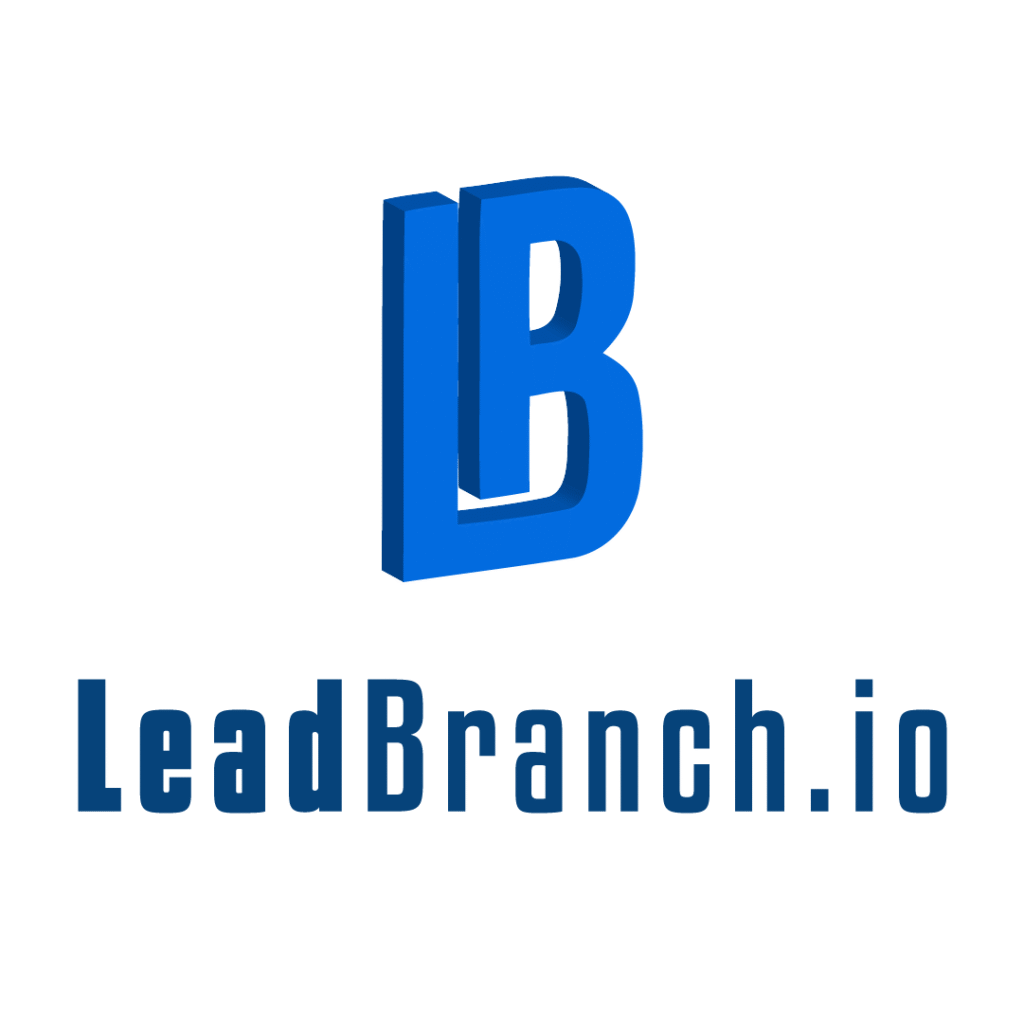Look: You did everything right. Right? You created an amazing offer, ran some ads, and now the leads are pouring in. No? No. Okay…. There’s a problem. Your sales are not growing at the same speed now! It feels like you’re trying to catch water with a sieve, does it not? Classic sign your approach to lead management’s got major holes in it! So listen up….
Good lead management is not just about collecting names; it is about turning those names into happy, paying customers.
You might have hundreds, or even thousands, of potential customers on your list. But if you do not have a system to handle them, you’re just sitting on a pile of lost potential. This misalignment often causes friction between the marketing team and sales teams, as valuable opportunities are missed.
So what do you do? OLX has got some answers for ya. It’s called lead management with LeadBranch!
Table of Contents:

- What Exactly Is Lead Management (And Why Should You Care)?
- The Typical Lead Management Mess: Does This Sound Familiar?
- A Smarter Way to Handle Your Lead Management
- The Role of Automation in Modern Lead Management
- Putting It All Together with LeadBranch
- Conclusion
What Exactly Is Lead Management (And Why Should You Care)?
Let us clear this up right away. Lead management is the process you use to track and manage potential customers. It starts the moment someone shows interest in your business and ends when they either buy something or drop out of your sales pipeline. This process covers the entire sales cycle, from a person’s first visit to your website to the final purchase.
Think of it like a dating app for your business. You would not just swipe right on everyone and send the same generic message, right? You would want to learn about them, see if you are a good match, and say the right things to build a connection. A good lead management process does this for your business, forming the foundation of a strong customer relationship.
Without it, you are flying blind. You have no idea who is a hot lead and who is just window shopping. This is why you should care; a solid strategy here makes sure your marketing efforts actually turn into revenue.
Why Most Companies Stumble
So many businesses pour their budget into lead generation but forget about the next step. A report from MarketingProfs points out that companies excelling at lead nurturing generate 50% more sales-ready leads at a 33% lower cost. That is a huge difference that impacts your bottom line directly.
The truth is, not all leads are created equal. Some people are ready to buy today, while others might have a longer sales cycle and need months of gentle nudging. A great lead management system helps you figure out who is who, so you can focus your energy where it counts the most by identifying qualified leads early.
If you ignore this, you are essentially letting your competitors scoop up the customers you worked so hard to attract. A systematic approach prevents this leakage. You can use marketing automation to nurture those with a longer sales process, keeping your brand top-of-mind until they are ready to buy.
The Typical Lead Management Mess: Does This Sound Familiar?
If you do not have a clear system, your sales process probably feels pretty chaotic. Your team might be chasing down every single sales lead with the same level of enthusiasm. This leads to burnout and a lot of wasted effort on people who were never going to buy anyway.
Does your sales team complain about the quality of leads from marketing? Does marketing feel like their hard work is being ignored? This is a classic sign of a breakdown in the lead management pipeline because you cannot properly track lead activities. Both teams need to be on the same page, working with the same data inside a management crm.
You probably have leads scattered everywhere. Some are in spreadsheets, others are in someone’s email inbox, and maybe a few are scribbled on a notepad. It is impossible to manage lead conversations or follow up effectively when your data is a disorganized jumble. A solid lead tracking lead system prevents important details from getting lost.
The Perils of a Generic Approach

Another big issue is treating every lead the same. Imagine sending a welcome email about your beginner services to a seasoned expert who downloaded an advanced guide. It is awkward and immediately shows prospective customers you are not paying attention. This kind of generic email marketing kills a potential sale before it even begins.
According to research from McKinsey & Company, personalization can lift revenues by 5-15% and increase marketing spend efficiency by 10-30%. When you do not personalize, you are leaving that money on the table. You are also missing the chance to build a real relationship with your audience.
This is where lead management tools change the game. Instead of blasting everyone with the same message, you can start treating people like individuals. A solid lead management platform makes this kind of personalization simple and automatic, so you are always sending the right message at the right time.
A Smarter Way to Handle Your Lead Management
Getting your lead management process in order might seem like a huge task, but it does not have to be. By breaking it down into a few clear steps, you can move from chaos to a smooth, efficient system. This approach helps you align sales and marketing efforts to close more deals.
It is about working smarter, not harder. Let us walk through the steps to build a process that works for your business. You will soon see how a little organization can lead to massive results.
Step 1: Capturing Leads the Right Way
It all starts with how you bring leads into your system. Whether you use website forms, social media campaigns, or landing pages, the goal is to get clean, useful information. You want to make it easy for people to give you their details, but you also need enough first-party data to qualify them later.
Think about the information you really need. Asking for too much at the initial contact point can scare people away. But asking for too little might leave you with a useless contact. It is a balance that good lead management software can help you find.
You could start with just an email, and then ask for more information as they engage more with your content. This builds trust and gives you better data over time while respecting data privacy laws. The objective is to have a centralized place where all this information automatically flows.
Step 2: Cleaning and Organizing Your Data
Once you have leads, you must verify the data is accurate. People make typos, change jobs, or abandon old email addresses. A database full of bad information is almost as bad as having no database at all, as it hurts your conversion rate.
This is why data cleaning is so important. It involves fixing typos, removing duplicate entries, and updating old information. A clean database means your team is always working with the most current details, making outreach from your sales rep more effective.
A modern crm tool is invaluable here because it often includes features for data appendices and cleaning. It can automatically clean your lists and even add more information to a contact, like their company size or job title. This keeps your database healthy and powerful, giving your sales reps the information they need to succeed.
Step 3: Qualifying Leads Like a Pro
Not every lead is a good fit for your business, and that is okay. The trick is to quickly identify the ones who are your ideal customers. This process, known as lead qualification, is where you separate the hot prospects from the tire kickers.
Many businesses use a method called lead scoring where you develop criteria to rank prospects. This involves assigning points to leads based on their attributes and actions. For example, a qualified lead from a specific industry might get more points, or someone who visits your pricing page might get a score boost.

This is where robust management software shines. It allows you to filter your leads with incredible precision. You can segment your database based on all sorts of demographic information, making the process of qualifying leads much more efficient. This level of filtering helps your sales team only spend time on leads who are a perfect match for your product, increasing their chances to make a lead conversion.
Step 4: Nurturing Leads with Personalized Communication
Once you have identified your best leads, it is time to build a relationship. Most leads are not ready to buy right away. They need to be nurtured with valuable content and timely communication that helps them solve their problems.
This is where personalization comes back into play. You can send personalized emails based on a lead’s interests, behavior, or where they are in your sales funnel. An SMS message, for example, can be an incredibly effective way to connect with your hottest leads since open rates for texts are much higher than for emails.
You can use automated email and email sequences to deliver the right content at the right time. The goal is to stay engaged without being pushy. This thoughtful approach helps move the sales lead closer to a sale.
The Role of Automation in Modern Lead Management
Handling every step of the lead management process manually is no longer practical for growing businesses. Marketing automation has become an essential component of an effective strategy. Using the right management software saves time and eliminates human error.
Automation helps with lead distribution by automatically assigning a new sales lead to the correct sales rep. This can be based on territory, industry focus, or current workload, making sure no lead has to wait for a follow-up. Prompt communication can significantly impact whether leads convert.
Automation tools also help track lead activities across your website, emails, and social media channels. This data provides deep insights into a lead’s interests and readiness to buy. A good crm tool presents this information clearly, so your sales teams do not waste time on cold prospects.
| Feature | Manual Process | Automated Process |
|---|---|---|
| Lead Entry | Manual data entry, prone to errors. | Automatic capture from web forms and other sources. |
| Lead Scoring | Subjective guessing by reps. | Objective scoring based on behavior and demographics. |
| Nurturing | Sporadic, manual emails and calls. | Timely, personalized, automated email sequences. |
| Distribution | Manager assigns leads manually, causing delays. | Automatic lead distribution based on preset rules. |
| Reporting | Time-consuming spreadsheet analysis. | Instant dashboards and reports for clear insights. |
Ultimately, a systematic approach helps you manage leads more efficiently. It frees up your team from repetitive tasks so they can focus on high-value conversations. If you want to scale your efforts, automation is a must.
Putting It All Together with LeadBranch
You can try to piece together a system using spreadsheets and various separate lead management tools. But that often creates more problems than it solves. Data gets lost between platforms, and your team is stuck trying to make everything work together. A single, powerful platform for customer relationship management is a much better path.
LeadBranch works as a complete database to manage your entire lead lifecycle. It connects all the steps we have talked about into one smooth workflow. From capture to qualification to relationship management, it gives you everything you need to turn leads into revenue.
Here is how LeadBranch transforms your lead management strategies:
- It acts as your central database, so all your lead information is in one place.
- Its advanced filtering lets you find your ideal customers based on dozens of criteria.
- Data cleaning and appendix features keep your information accurate and up-to-date.
- Its specialized SMS tools, like clickers and pop-up fields, improve engagement.
- Smart features like time zone texting and responder messaging make your outreach timely and personal.
Using a tool like LeadBranch frees up your team from manual data entry and guesswork. They can focus on what they do best: building relationships and closing sales. It turns your lead management from a liability into your biggest competitive advantage, especially for companies that may have a longer sales cycle.

Conclusion
Stop letting good leads fall through the cracks. A disorganized approach to lead management costs you money and holds your business back. By putting a strong system in place, you can improve your conversion rates and set your sales team up for success.
Your process does not have to be complicated; it just needs to be intentional. Capture your leads cleanly, qualify them intelligently, and nurture them personally. This is the foundation of effective customer relationship management.
Are you ready to stop chasing dead ends and start talking to customers who are genuinely interested in what you offer? LeadBranch gives you the power to filter your database and find your ideal buyers based on detailed demographic information. You can finally focus your energy on the leads most likely to become loyal customers. Refine your lead management process today.




